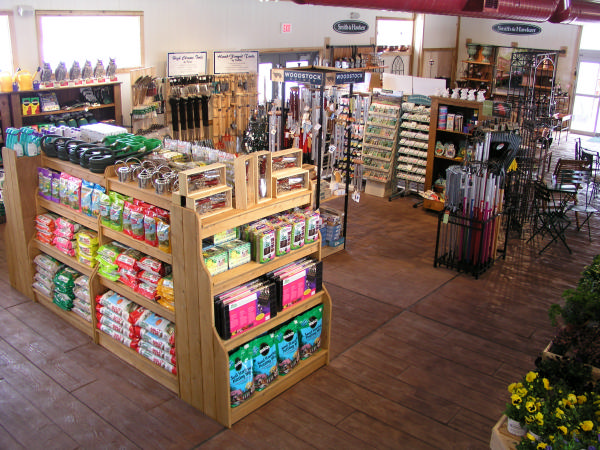






Plants, like people, need to be fed regularly, and like people, too much or too little is not a good thing. So, giving advice on fertilizing plants can be challenging. Differences in soil types, existing nutrients, plant type and climate are but a few of the factors that affect proper fertilization. First, let’s understand a little bit about fertilizers in general. All plants require at least 17 different nutrients to survive. Some nutrients come from the air, some from water and others from the soil. When we fertilize a plant, we are adding some of the nutrients that come from the soil.
When we fertilize, three nutrients stand out as the ones that are needed in the greatest amount and that need to be supplemented most often. These are called the primary nutrients: nitrogen, phosphorous, and potassium . Every fertilizer will have three numbers on its label to indicate the percentage of each of these three nutrients that it contains. For example, our Bud-N-Bloom Booster is a 15-30-15 formulation. It contains 15% nitrogen, 30% phosphorus, and 15% potassium. Knowing the formulation is important, but there are other factors such as solubility, molecular form, etc. that directly affect nutrient availability. We will leave those details to the plant scientists and others who have a more technical interest, but it is essential to purchase fertilizers from a trusted source so you can have confidence that you are getting what you pay for and what your plants need.
In addition to the primary nutrients, many premium fertilizers (like all Cottage Farms fertilizers) include a group of nutrients know as the micronutrients. These are plant nutrients that are just as essential for healthy plant growth as any of the other nutrients we have discussed, but are needed only in small amounts by the plant. One can think of micronutrients for plants as being analogous with vitamins for people. Selecting fertilizers with a complete micronutrient package is always the best choice.
Young plants and recently transplanted plants often grow more rapidly and have a less developed root system than the more mature established plants, thus more frequent supplemental fertilization is called for. Annuals also require a lot of nutrients to sustain their rapid growth and flowering. For best results fertilize young, fast growing plants and all annuals every one to two weeks with a soluble fertilizer, such as one of our Bud-N-Bloom fertilizers. For established shrubs and trees two or three feeding in the spring to early summer should be sufficient. When applying soluble fertilizers, like those offered by Cottage Farms, the application would be very similar to a “watering” as described in the Basic Garden Watering section.
If you chose to use a “dry” fertilizer, place the fertilizer where it will reach the plant roots, within the area between the trunk and the drip line. Spread the fertilizer evenly over the entire area and be cautious to avoid getting fertilizer on the trunk. The best time for this application is in the spring when you see some new growth emerging. If you have shrubs and trees planted in grassy areas you will want to apply several small amounts to avoid burning the grass. If you use a “slow release” fertilizer, follow the label closely as each formulation varies in content and longevity.
Never fertilize a dry plant . It is a good idea to thoroughly water a plant the day before fertilizing.
Be sure you have had rain or you have irrigated between fertilizations. Remember more is not better when it comes to fertilizing. It is very important to read the fertilizers directions on how much to apply. It is better to use less fertilizer more often than too much which can burn the roots and kill the plant.
As a general rule, fast growing plants like annuals need more fertilizer than slower growing plants. For most plants, stop all fertilization with the approach of fall and allow the plants to harden off and enter winter dormancy.
Over fertilization: Too much fertilizer creates a “salty” condition in the soil that can damage roots and inhibit water and nutrient uptake. The symptoms are similar to the signs of under watering (drought).
Under fertilization: Nutrient deficiencies occur when one or more of the essential nutrients are unavailable or in short supply. Nitrogen deficiency is probably the most common deficiency, and its symptoms are yellowing of the lower (older) leaves. Most deficiencies are difficult to diagnose and are usually avoided with adequate fertilization.
Article By Cottage Farms Direct. Check us out at http://www.cottagefarmsdirect.com
Copyright © www.100flowers.win Botanic Garden All Rights Reserved